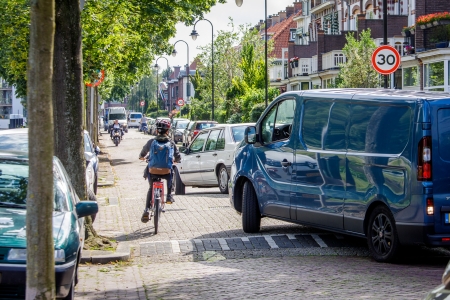The traffic concept Shared Space focuses on the entire design of public space, in particular that of residential areas. Like Sustainable Safety, Shared Space sets requirements to a credible layout of residential areas with the idea that high-speed traffic is only a guest in these areas or may be a threat to vulnerable road users and should therefore drive at a low speed [72] [73] [74]. Like Sustainable Safety, it emphasizes the importance of an appropriate road network structure with sufficient through-roads to prevent rat runs through residential areas.
Shared Space contends that traffic conflicts are best handled by incorporating uncertainty into the traffic situation through minimizing the number of traffic and road signs. This way, road users should pay more attention and work things out together, for instance by means of eye contact. Sustainable Safety, by contrast, relies on ‘recognizability and predictability’ and lays the burden of responsibility for safe traffic circulation on the shoulders of those who are responsible for the system, rather than on the shoulders of the road user.
Shared Space wants to make the public space layout credible by means of ‘natural’ elements. Sustainable Safety does not rule out this solution – provided it results in lower speeds and safe encounters – but also uses traditional traffic engineering countermeasures (speed humps, raised intersections, road narrowing) that have proved to lower speeds effectively.
